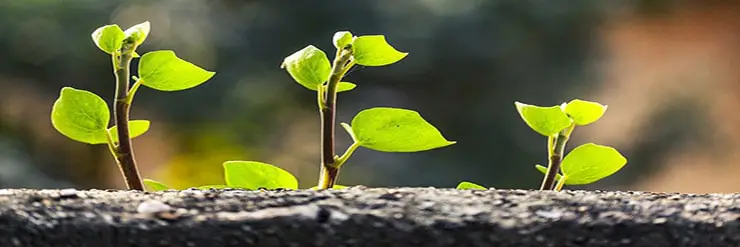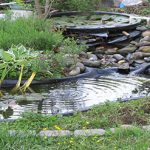Greenhouses need sun. How much sun they need depends on the greenhouse. Some greenhouses don’t need a lot of sun while others do. The amount of sunlight your greenhouse receives will depend on its location and size, as well as the time of year. So, how much sun does a greenhouse need and can it have too much sun?
Greenhouses need at least six hours of sun each day to stay warm. If they don’t get that much sun, they run the risk of losing their temperature at night. However, after 10 hours of sun, greenhouses start to dry out. A factor in the amount of sun you will need is what you are growing.
In this blog post, we will discuss how much sun a greenhouse needs and why it is important to have the right amount of sun. We will also provide tips on how to get the right amount of sun for your greenhouse. So, if you are interested in learning more about this topic, keep reading!
- How Much Sun Does A Greenhouse Need
- Does a greenhouse need direct sunlight?
- Plant Sunlight Requirements
- Can a greenhouse be in the shade
- How to control temperature and humidity in greenhouse
- Dealing With the Ball of Fire in the Sky
- But What is Germination?
- No sunlight? No problem!
- How complicated can light be
- Wrap Up
How Much Sun Does A Greenhouse Need
The minimum amount of sun that a greenhouse need depends on what you are growing.
- For plants that require a lot of light, such as tomatoes, you will need at least 6 – 8 hours of direct sunlight per day.
- For plants that do not require as much light, such as lettuce, 4-6 hours of direct sunlight will suffice. However, it is always best to err on the side of too much sun rather than not enough.
Too little sun will result in leggy, spindly plants that produce fewer fruits or vegetables. Too much sun, on the other hand, will simply cause the plants to wilt and eventually die.
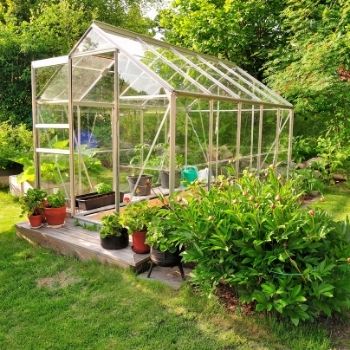
The best way to ensure that your greenhouse gets enough sun is to choose a location that receives direct sunlight for most of the day.
If you live in an area with long winters and short days, you may want to consider installing grow lights to supplement the natural sunlight.
Grow lights can be placed on timers so that they automatically turn on and off as needed, ensuring that your plants always get the light they need to thrive.
Does a greenhouse need direct sunlight?
No, a greenhouse does not need direct sunlight. In fact, too much direct sunlight can be harmful to plants. Greenhouses work by trapping heat and light from the sun, which helps to create a warm, stable environment for plants to grow.
How much sunlight a greenhouse gets will depend on its location and orientation. If you’re looking to grow plants that need a lot of sunlight, then you’ll want to make sure your greenhouse is located in a sunny spot.
However, if you’re trying to grow plants that don’t need as much sunlight, then a location that gets some shade during the day may be better.
Plant Sunlight Requirements
As you can imagine different plants, vegetables, herbs, and fruit require completely different sunlight requirements. Just consider the vegetable and fruit selection during different parts of the year, usually what you can during the summer months will differ from winder months. This is because of different sunlight requirements for each crop.
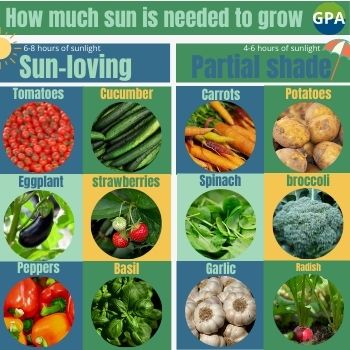
So how much sun a greenhouse will need largely depends on what you intend to grow. As mentioned, it’s mainly recommended to give a greenhouse 6 to 8 hours of full direct sunlight as this is best for most vegetables and fruits.
There are other vegetables that don’t need as much sun and prefer less direct sunlight.
This table below shows 5 different types of sunlight requirements. These types of sunlight will give you some direction on how much sunlight is needed. Combine this information with the information that comes with the growing suggestions when you buy it and you have all the information needed to grow the perfect crops.
| Sunlight | Plant Type |
|---|---|
| Full sunlight – 6-8hours | Plants that love a day’s sun exposure. Usually considered 6-8 hours of direct sunlight. Consider afternoon sun will the strongest direct sunlight |
| Partial sunlight – 4-6 hours | Plants that require between 4-6 hours of sunlight per day. They also benefit from some shade time too, especially the afternoon sunlight. These rays might be too strong for partial sun plants. |
| Partial shade – 4-6 hours | Partial shade plants, similar to partial sunlight plants, don’t like the strength of the afternoon sun too much. Morning sun is much more suitable. They prefer to be shaded during this time. These plants are not quite as sun-loving as partial sun plants. |
| Dappled sun | Dappled sun plants require less sunlight and prefer their sun intake to be filtered as it offers more protection to the plants. Using a Sun Shade Canopy (Amazon link) or filtering the sunlight through other more sun-loving plants would be the best solution. |
| Full shade – 3-4 hours | Despite the name, sunlight is still needed, only 3-4 hours a day. Try to avoid afternoon sunlight the rays are too strong for full shade plants. Using a Sun Shade Canopy here or placed in shaded areas would be best. |
Plants grow faster in a greenhouse than outside so taking this information you can now plan where you want your greenhouse and what you want to grow inside to yield the best results. You can statically plan where your plants will be placed inside your greenhouse so they all get the required sun needed. Tools like a Sun Shade Canopy (Amazon link) will help to keep your plants shaded when needed as well as keeping your greenhouse well ventilated and if needed add extra lighting to increase heat and light exposure for more light-loving plants.
Can a greenhouse be in the shade
A greenhouse can be in the shade, but it will not be as effective as if it were in full sun. The plants will not grow as well and the temperatures will be cooler. If you are going to have a greenhouse in the shade, you will need to supplement the lighting with grow lights or an additional heating source.
Related article:
How to control temperature and humidity in greenhouse
In many cases you will need to control the temperature and humidity within your greenhouse. You can monitor the temperature and humidity levels using a thermometer, this will help you know when action is needed.
If you have the extra money to spend you can automate the whole process.
The optimal growing conditions for temperature and humidity are listed below:
| °F | °C | Humidity |
|---|---|
| 50 | 10 | 83% |
| 61 | 16 | 89% |
| 68 | 20 | 91% |
| 86 | 30 | 95% |
If your greenhouse is not getting enough sunlight
If your greenhouse is not getting enough sun then you can try one of two options: either move it or add artificial light. If you decide to add artificial light, then you need to make sure that the light is not too close to the plants or it will scorch them. The light should also be diffused so that it does not create hot and cold spots within the greenhouse.
To diffuse the light, you can either hang a white sheet over the top of the greenhouse or add a layer of frosted glass to the roof. This will help to evenly distribute the light and prevent any one area from getting too much or too little light.
If your greenhouse temperature and humidity need adjusting
There are a few things you can do to help control the temperature and humidity in your greenhouse. One is to make sure that there is good ventilation. You can do this by opening the door or windows to let in fresh air. You can also use a fan to help circulate the air.
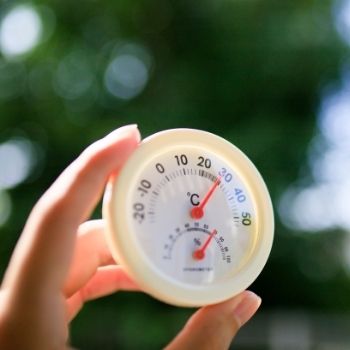
Another thing you can do is to use a humidifier or dehumidifier to help control the humidity levels. You will want to experiment to see what works best for your particular greenhouse.
You can also try using a shade cloth to help keep the greenhouse cooler in the summer months. This can be hung over the door or windows to help block out some of the sun’s rays.
Finally, you will want to make sure that you are watering your plants regularly. This will help to keep the air inside the greenhouse moist and will also help to cool the air down.
Dealing With the Ball of Fire in the Sky
So how is one supposed to know how to manage the sun? How do you navigate something from which you cannot escape?
To begin with, the sunlight needs of your greenhouse are going to be determined by the specific growing needs of what you plant.
Plants start as seeds, and these seeds will require specific temperatures to “germinate”. Germination is the process of a seed growing into a plant.
But What is Germination?
Germination is a process triggered by temperature. Some plants germinate at different temperatures than others. Take pears as an extreme example. Pear seeds germinate between 32° and 40° Fahrenheit. That puts them right at the edge of freezing. Meanwhile, corn seeds germinate at 75° to 90° Fahrenheit. That’s more than twice as warm!
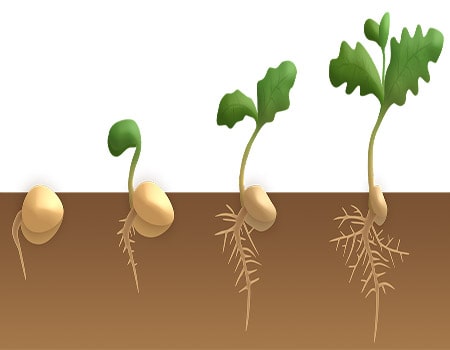
It would be impossible to grow these plants next to each other without some sort of additional apparatus, such as a UV lamp to warm just the corn, or a fan to cool just the pears.
Strangely, some plants do not even germinate except in extreme temperatures, such as freezing or burning. If you have ever wondered why grass grows back greener after a brush fire, it is because the science of germination accounts for exactly that situation.
In short, your sunlight needs will be determined by what you intend to grow and when you intend to grow it.
Fruits generally have lower heat needs than vegetables; pears are an extreme example, but even strawberry seeds germinate at 40° to 60°. This means that many fruits will require some form of shade built into or around the greenhouse during the summer.
The main issue of the summertime is the longer days. The heat will be manageable at the beginning of the day, but it will only build as more and more sunlight pours into the greenhouse.
No sunlight? No problem!
But what if you need more sunlight than nature is giving you? What if you are growing during the winter, or in a city where skyscrapers might block your greenhouse’s view of the sun? Even during the spring and summer, rain can come and obstruct the sun for days at a time.
That is to say nothing of environments further from the equator, where longer winters make planting season into a gloomy second autumn. What do you do when the seasons just don’t provide?
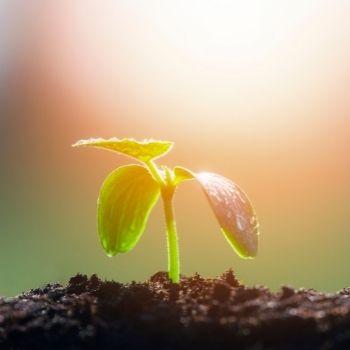
In that case it is best to break down the problem to understand what you need to get out of the sun that the sun is not providing. Are you needing more sunlight? Or is it a combined problem of light and heat?
If your greenhouse is warm enough, but not getting the light it needs, then the solution to your problem is as simple as the right kind of lamp.
Plants enjoy the sun’s rays because of its intensity, but modern light fixtures can compete with this intensity.
How complicated can light be
See, light exists on a spectrum. Some light hits your eyes more frequently. This is because it has a shorter “wavelength”, and as a result of this shorter wavelength the light takes on a different color. Purple and blue light has the shortest wavelength of all visible light. A short wavelength means the light collides with anything it touches more frequently.
This makes purple and blue LED lights a feast for light-starved greenhouses.
A plant feeding off of a blue light will get nearly double the nutrition than it would from an orange light of the same intensity. It is a simple matter of the blue light “hitting” the plant at a higher frequency than the orange light.
Blue light is recommended over purple light, however. Even though purple light has an even higher frequency than blue light, it can actually be so high that plants can’t absorb it.
There are many kinds of light that are not visible to the human eye for the same reason. In this case, the human eye can identify a color of light (purple) that plants have trouble absorbing.
Okay, That’s Pretty Complicated.
You can use lights to supplement your greenhouse even if it gets direct sunlight.
This is because the big danger of sunlight is the heat more than the light. As stated before, there are many types of light that are not visible, and these types of light are what carry heat with them.
A blue LED light is not going to output the invisible ultraviolet or gamma rays the sun does. This makes them safe to use to your heart’s content. Just so long as you do not drive up your electrical bill.
Giving your greenhouse enough sunlight is all a matter of knowing what you are growing.
Specifically, you must know how much heat it needs to germinate. Then you just need to keep the sunlight from drying up its water supply.
To manage the heat, you need to manage the sunlight. And if the sun becomes too much for the plants to bear, there is always the option to use LED lights to keep your plants going. And as long as you keep your plants happy with ample, digestible light, they’ll keep you happy as well.
Wrap Up
So, how much sun does a greenhouse need? 6 hours is a good middle ground number to achieve. The amount of sun your greenhouse needs will depend on what you are growing, how much direct sunlight it receives and the time of year. As such, it is important to monitor the light levels in your greenhouse and make adjustments as needed.
too much sun, on the other hand, will simply cause the plants to wilt and eventually die.

